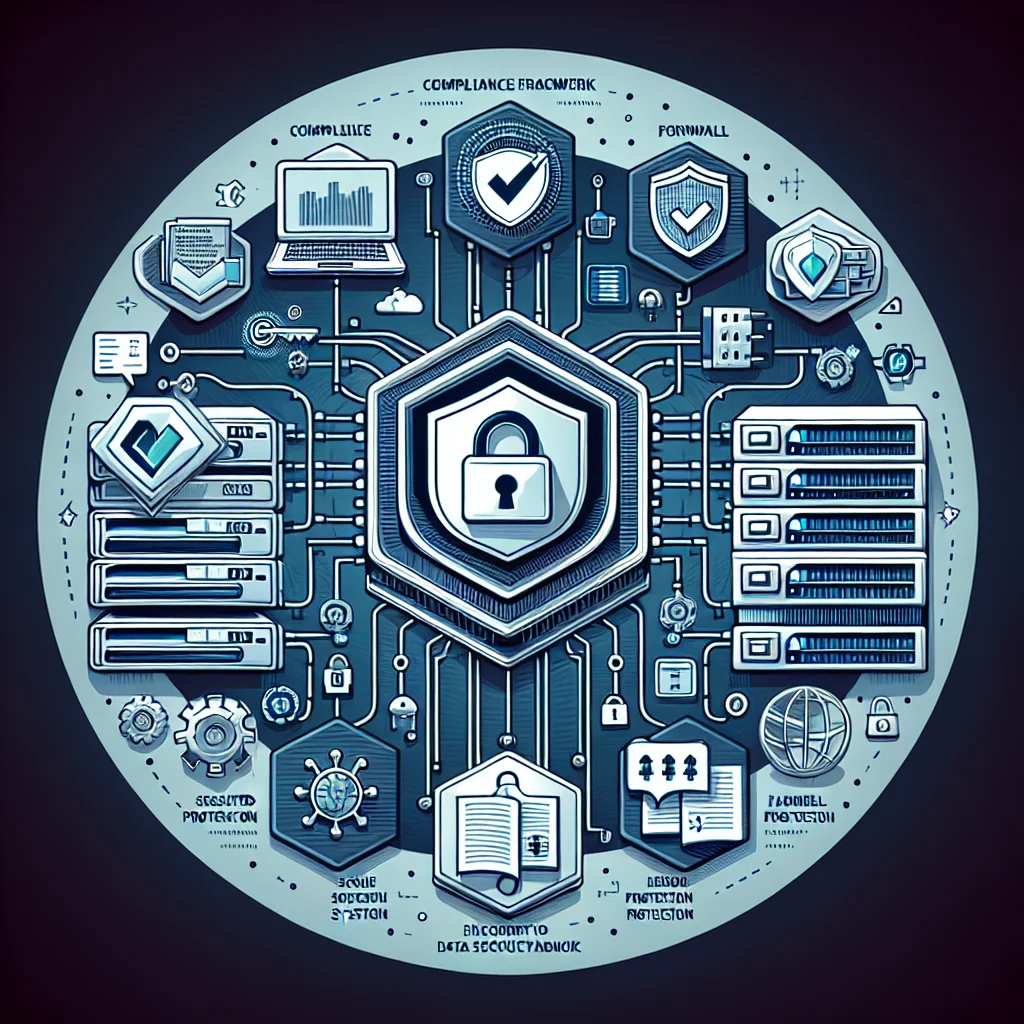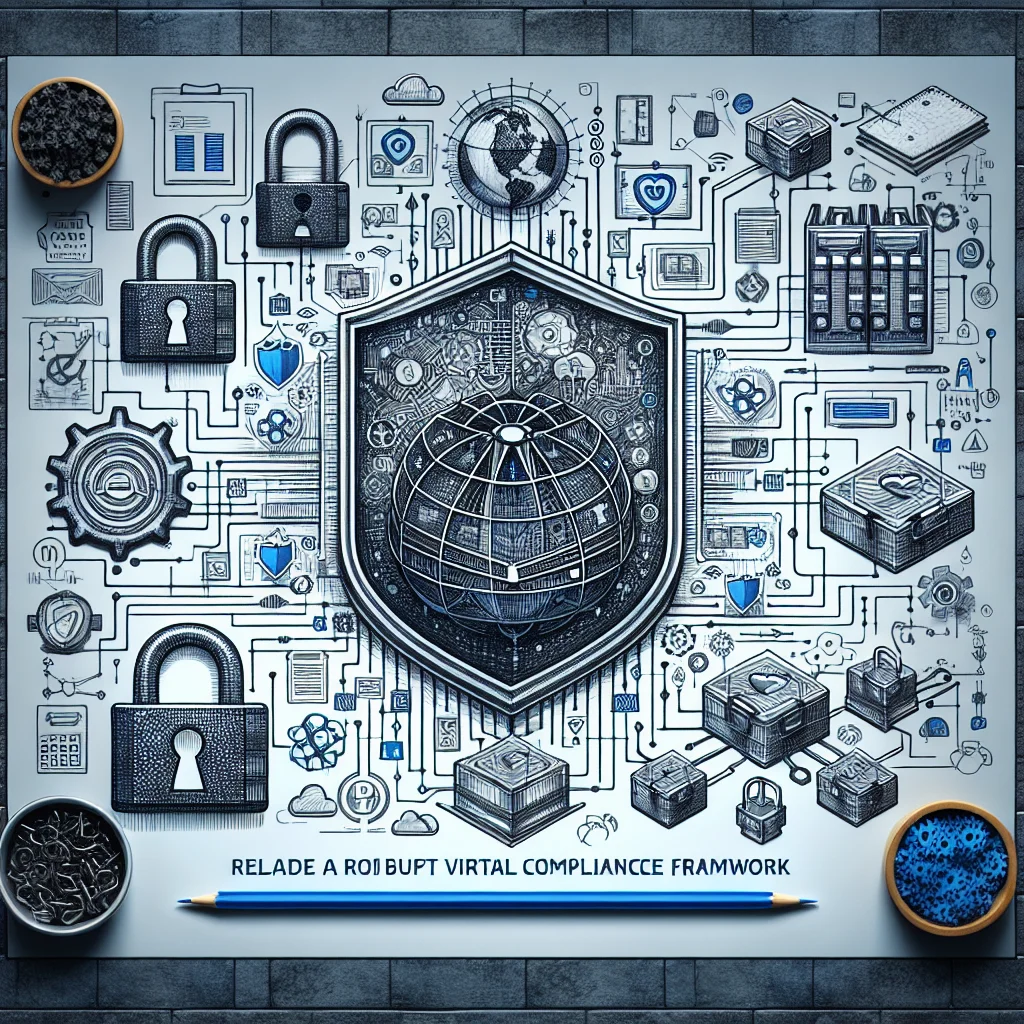In the realm of IT security and compliance, Middle Eastern organizations are increasingly turning their eyes toward the National Cybersecurity Authority’s Critical Cybersecurity Controls (NCA CCC). With the surge in cyber threats and data breaches, adherence to this framework is not only a legal necessity but also a strategic asset.
What is the NCA CCC?
The NCA CCC is a set of cybersecurity standards and guidelines developed by Saudi Arabia’s National Cybersecurity Authority (NCA). It aims to enhance the security posture of organizations operating within critical sectors by providing a comprehensive framework for managing cybersecurity risks.
Who is it for?
The NCA CCC framework is primarily designed for organizations operating in critical sectors within Saudi Arabia, such as:
- Energy
- Finance
- Health
- Information Technology
- Telecommunications
However, given the interconnected nature of these sectors, businesses in adjacent industries can also benefit from adopting NCA CCC guidelines to bolster their cybersecurity measures.
Commonly Asked Questions by CISOs
1. Why should my organization adopt the NCA CCC framework?
Adopting the NCA CCC framework helps ensure that your organization meets the cybersecurity requirements mandated by Saudi Arabian law. Additionally, it provides a structured approach to managing cybersecurity risks, enhancing your organization’s overall security posture and resilience against cyber threats.
2. How does the NCA CCC framework compare to other frameworks like ISO 27001 and PCI DSS?
While the NCA CCC framework shares similarities with globally recognized frameworks like ISO 27001 and PCI DSS, it is tailored specifically to address the unique cybersecurity challenges faced by critical sectors within Saudi Arabia. This localized focus makes it particularly relevant for organizations operating in the Middle East.
3. What are the key components of the NCA CCC framework?
The NCA CCC framework is composed of several key components, including:
- Cybersecurity Governance
- Risk Management
- Cybersecurity Operations
- Incident Response
- Business Continuity
Each component encompasses specific controls and requirements designed to mitigate cybersecurity risks and ensure the protection of critical assets.
4. How can my organization achieve compliance with the NCA CCC framework?
Achieving compliance with the NCA CCC framework involves several steps, including:
- Conducting a comprehensive risk assessment to identify potential cybersecurity threats and vulnerabilities.
- Implementing the necessary controls and measures to mitigate identified risks.
- Regularly monitoring and reviewing your organization’s cybersecurity posture to ensure ongoing compliance.
Many organizations find it beneficial to partner with a compliance automation platform like ComplyHawk to streamline the compliance process and ensure that all requirements are met.
5. What challenges might my organization face when implementing the NCA CCC framework?
Organizations may encounter several challenges such as a lack of understanding of the specific requirements, resource constraints, and difficulties in aligning existing processes with the framework. Investing in training and hiring experienced cybersecurity professionals can help mitigate these challenges.
6. How can I measure the effectiveness of the NCA CCC implementation?
To assess implementation effectiveness, organizations should establish key performance indicators (KPIs) related to risk reduction, incident response times, and compliance adherence. Regular audits and reviews of cybersecurity practices will also provide valuable insights into areas needing improvement.
7. Is employee training important in implementing the NCA CCC framework?
Absolutely. Employee awareness and training are critical components of effective cybersecurity practices. Engaging staff in training programmes will promote a culture of security and ensure that all team members understand their role in protecting sensitive data.
8. Can the NCA CCC framework adapt to the evolving cyber threat landscape?
Yes, the NCA CCC framework is designed to be adaptable. Organizations are encouraged to continuously revise their cybersecurity strategies in response to emerging threats and vulnerabilities, ensuring that their defenses remain robust and effective over time.
9. What resources are available to help organizations implement the NCA CCC framework?
Organizations can access a variety of resources, such as official NCA documentation, industry partnerships, and compliance consulting services. Additionally, attending workshops and cybersecurity conferences can provide further insights and best practices for successful implementation.
10. How often should my organization review its NCA CCC compliance?
Organizations should conduct a comprehensive review of their NCA CCC compliance at least annually, or more frequently if there are significant changes in the cybersecurity environment, such as new regulations or emerging threats. Regular reviews help ensure that the organization adapts to evolving risks and maintains robust security measures.
11. What role does technology play in NCA CCC compliance?
Technology is integral to achieving NCA CCC compliance, as it can facilitate the automation of compliance processes, enhance threat detection and response capabilities, and streamline the monitoring of controls. Tools such as security information and event management (SIEM) systems, vulnerability scanners, and compliance management platforms can significantly support compliance efforts.
12. Are there any penalties for non-compliance with the NCA CCC framework?
Yes, organizations that fail to comply with the NCA CCC framework may face legal repercussions, including fines and sanctions from regulatory authorities. Furthermore, non-compliance can damage an organization’s reputation, leading to loss of customer trust and potential business opportunities.
13. Can small and medium-sized enterprises (SMEs) benefit from the NCA CCC framework?
Definitely. SMEs can benefit from adopting the NCA CCC framework by improving their cybersecurity posture, protecting sensitive data, and meeting regulatory requirements. The principles outlined in the framework can be scaled to fit the size and resources of smaller organizations, ensuring that they remain secure amid growing cyber threats.
14. What is the importance of incident response planning in the NCA CCC framework?
Incident response planning is crucial as it prepares organizations to effectively respond to and recover from cybersecurity incidents. Having a well-documented and rehearsed incident response plan ensures a quick and coordinated reaction, minimising damage and restoring normal operations more rapidly.
15. How does collaboration with other organizations enhance NCA CCC implementation?
Collaboration with other organizations allows for the sharing of best practices, threat intelligence, and resources, which can significantly enhance an organization’s cybersecurity capabilities. Engaging with industry peers, security forums, and public-private partnerships fosters collective resilience against evolving cyber threats.
16. What should my organization do in the event of a cybersecurity breach?
In the event of a cybersecurity breach, organizations should follow their incident response plan, which should include immediate containment measures, investigation to determine the scope and impact of the breach, and notification to affected parties as necessary. Post-incident, it is crucial to conduct a thorough analysis to identify the root cause and to implement improvements to prevent future incidents.
17. How can I ensure that third-party vendors comply with the NCA CCC framework?
To ensure third-party vendors comply with the NCA CCC framework, organizations should conduct due diligence assessments, requiring vendors to demonstrate their cybersecurity policies and practices. Incorporating compliance clauses in contracts and conducting regular audits can also help maintain compliance throughout the vendor relationship.
18. What are the common misconceptions about the NCA CCC framework?
Common misconceptions about the NCA CCC framework include the belief that it is only relevant for large organizations or that it can be fully implemented once and then forgotten. In reality, the framework is applicable to businesses of all sizes and requires continuous effort and adaptation to remain effective amidst a constantly changing cybersecurity landscape.
19. How can leadership support the implementation of the NCA CCC framework?
Leadership can support the implementation of the NCA CCC framework by promoting a culture of security, allocating resources for training and technological investment, and ensuring that cybersecurity is prioritized in business strategy discussions. Engaging in regular communication about cybersecurity initiatives helps reinforce their importance across the organization.
20. What impact does employee turnover have on NCA CCC compliance?
High employee turnover can negatively impact NCA CCC compliance, leading to gaps in knowledge and training with new hires. Organizations should implement ongoing training programs and create comprehensive onboarding processes focused on cybersecurity awareness to mitigate risks associated with employee changes.
21. How can organizations measure the effectiveness of their NCA CCC compliance efforts?
Organizations can measure the effectiveness of their NCA CCC compliance efforts through regular audits, compliance assessments, and performance metrics. Key performance indicators (KPIs) such as the number of identified vulnerabilities, incident response times, and employee training completion rates can provide valuable insights into compliance status and overall cybersecurity posture.
22. What is the process for reporting compliance violations within the NCA CCC framework?
Reporting compliance violations within the NCA CCC framework typically involves establishing a clear procedure for employees to report incidents or concerns. Organizations should create a designated channel for reporting, ensure confidentiality, and provide training to staff on recognizing and appropriately escalating compliance issues. Prompt investigation and resolution of reported violations are crucial to maintaining compliance integrity.
23. How often should employees receive cybersecurity training related to the NCA CCC framework?
Employees should receive cybersecurity training related to the NCA CCC framework at least annually, with additional sessions scheduled whenever there are significant updates to policies, procedures, or compliance requirements. More frequent training can be beneficial, especially during onboarding or when introducing new technologies to ensure all staff are equipped with the latest knowledge and tools to uphold compliance.
24. Are there specific tools recommended for NCA CCC compliance?
Yes, organizations are encouraged to utilise a variety of tools for NCA CCC compliance, including risk assessment platforms, vulnerability management solutions, and continuous monitoring systems. Implementing comprehensive security solutions such as endpoint protection, encryption technologies, and identity access management can also enhance compliance efforts and strengthen overall cybersecurity.
25. What steps should an organization take if it discovers a compliance violation?
If a compliance violation is discovered, the organization should immediately assess the severity and scope of the issue. This may involve documenting the violation, investigating any underlying causes, and notifying relevant stakeholders as per the incident response plan. Following the investigation, corrective actions should be taken to address the violation and prevent future occurrences, including possible revisions to policies, training, or controls.
Differences between the NCA CCC Framework and Certificate
It can be easy to confuse the CCC acronym, here are the variations for clarity.
NCA Critical Cyber Controls (CCC):
- The controls are applied across various industries, especially critical sectors like energy, finance, transportation, and healthcare. They cover a wide range of cybersecurity practices, from access management to incident response.
- Focuses on the practical implementation of cybersecurity measures across industries, ensuring that organizations are equipped to handle cyber threats.
NCA Cybersecurity Compliance Certificate (CCC):
- The certification applies to organizations that have successfully implemented and maintained the required cybersecurity controls and measures as defined by the NCA. The scope of the certification may vary depending on the specific requirements and the sector in which the organization operates.
- Focuses on the formal recognition of an organization’s adherence to cybersecurity standards, providing assurance to external parties that the organization is compliant with national cybersecurity regulations.
Cloud Cybersecurity Controls (CCC)
Cloud Cybersecurity Controls (CCC) encompass a set of specialized security practices and protocols designed to protect cloud-based environments. These controls address the specific risks and challenges associated with cloud services, including data breaches, unauthorized access, and the complexities of managing cloud infrastructure.
Essential Components of Cloud Cybersecurity Controls (CCC):
- Identity and Access Management:
- Implementing rigorous identity and access management (IAM) policies ensures that only authorized users can access cloud resources. This involves the use of multi-factor authentication (MFA), role-based access control (RBAC), and strict credential management practices.
- Data Encryption and Protection:
- Safeguarding data in the cloud involves encryption both during storage and transmission. Additional protective measures include data masking, tokenization, and regular data backups, alongside robust disaster recovery protocols.
- Network Security Measures:
- Protecting cloud networks requires the deployment of virtual private networks (VPNs), firewalls, and intrusion detection/prevention systems (IDS/IPS). Network segmentation and the secure configuration of cloud services are also critical components of this defense.
- Real-Time Monitoring and Logging:
- Continuous monitoring and logging of cloud activities help detect and respond to security incidents as they occur. Setting up centralized logging systems allows for detailed tracking and analysis of cloud events, with alerts for any suspicious behavior.
- Regulatory Compliance and Governance:
- Ensuring that cloud environments comply with applicable laws and industry standards, such as GDPR, ISO 27001, and NIST, is crucial. This involves establishing governance policies and conducting regular audits to verify compliance.
- Incident Response Strategy:
- Developing a detailed incident response plan for cloud environments is vital. This plan should outline specific steps for addressing security breaches, including communication, containment, and recovery procedures.
- Configuration Management:
- Ensuring that cloud resources are securely configured from the outset is essential. This includes managing configuration changes, applying patches, and utilizing automation tools to enforce security standards.
- Third-Party Risk Assessment:
- Evaluating and managing risks associated with third-party cloud service providers is necessary. This involves thorough vendor assessments, ensuring compliance with security requirements, and defining clear contractual obligations.
- Understanding Shared Responsibility:
- In cloud security, responsibilities are shared between the cloud service provider and the customer. The provider is typically responsible for securing the infrastructure, while the customer must secure the data and applications they deploy in the cloud.
- Employee Training and Security Awareness:
- Providing ongoing training for employees on cloud security risks and best practices is crucial. This ensures that users are knowledgeable about how to interact with cloud services securely.
Middle Eastern Considerations
When implementing the NCA CCC framework, organizations in the Middle East should consider several region-specific factors:
1. Regulatory Landscape
The Middle Eastern regulatory landscape is rapidly evolving, with governments placing increasing emphasis on cybersecurity. Organizations must stay abreast of changes in regulations and ensure that their cybersecurity practices align with emerging requirements.
2. Cultural Nuances
Cultural nuances and local business practices can influence the implementation of cybersecurity measures. Organizations should consider these factors when designing and implementing their cybersecurity programs to ensure that they are effective and culturally sensitive.
3. Collaboration and Information Sharing
Collaboration and information sharing between organizations and government entities are crucial for enhancing cybersecurity across the region. Organizations should actively participate in industry forums and initiatives to stay informed about emerging threats and best practices.
Common Controls Between Frameworks
One of the challenges CISOs often face is managing compliance with multiple cybersecurity frameworks. Fortunately, there are several common controls between the NCA CCC (Critical controls) framework and other widely recognized frameworks such as ISO 27001 and PCI DSS.
Example Control Mapping
- ISO 27001 A.6.1.1 (Information Security Roles and Responsibilities) maps to NCA CCC G.1.1.
- PCI DSS 12.5 (Assign Information Security to a Management-Level Role) maps to NCA CCC G.1.2.
- ISO 27001 A.12.1.1 (Documented Operating Procedures) maps to NCA CCC O.1.1.
- PCI DSS 10.6 (Review Logs and Security Events) maps to NCA CCC M.1.1.
By identifying and leveraging these common controls, organizations can streamline their compliance efforts and ensure that they meet the requirements of multiple frameworks effectively.
Conclusion
The NCA CCC framework is a vital tool for organizations operating in the Middle East, providing a structured approach to managing cybersecurity risks and ensuring compliance with local regulations. By understanding the key components of the framework, addressing region-specific considerations, and leveraging common controls between frameworks, CISOs can enhance their organization’s security posture and resilience against cyber threats.
If you’re a CISO or IT professional looking to streamline your compliance efforts and enhance your organization’s cybersecurity posture, consider partnering with an automated compliance platform such as ComplyHawk, which is a specialist in this framework and region. These platforms can help you achieve and maintain compliance with the NCA CCC framework and other relevant standards, allowing you to focus on what matters most—protecting your organization’s critical assets.



